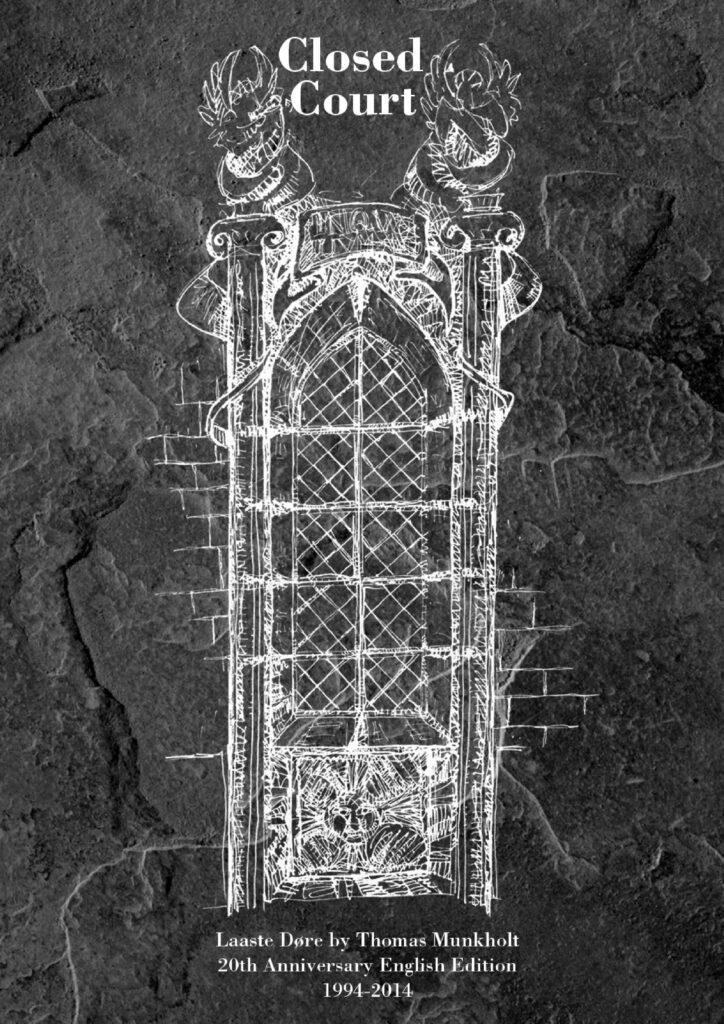In my A Game Per Year project, my goal has been to read one roleplaying game corebook for every year they’ve been published. However, I soon started to feel that it was hard to decipher how the games were really meant to be played. For this reason, I decided to start a parallel project, An Adventure Per Year, to read one roleplaying adventure for each year they’ve been published.

Closed Court is a Fastaval scenario by Thomas Munkholt originally published in 1994. I read it in the 20th anniversary English edition that came out in 2015.
In terms of its basic setup Closed Court is one of those scenarios where exit is impossible for a small group of people. I remember this setup being popular for Nineties larp as well. This time, the setting is a vaguely fascist country where the player characters have to determine who’s responsible for the disappearance of an important document even though all are innocent. Someone needs to be guilty and if none are guilty, all are guilty.
The obvious reference point is Kafka, both for the bureaucratic absurdism and the ominous, surreal tone. The characters are archetypal, identified with functional terms like the Dissident or the Procurator.
The scenario is interesting to read because it lays out the design theoretical ideas on which it’s based. A lot of roleplaying adventure design is based on a model where the player characters are a group with different skills who apply those skills to a series of challenges that are resolved together.
In contrast, Closed Court is a character-based game in which the chief focus of play is in the interaction of the player characters with each other as they seek to determine who’s guilty. To me this is a breath of fresh air after reading many adventures built on the classical model because my own play culture places a lot of importance on the freewheeling social interaction between players and their characters.
The 20th anniversary edition features a foreword contextualizing the original work. Munkholt notes that the design has been preserved as it was to serve as a historical document even though he’d now design many things differently. An interesting example are a few vestigial game mechanics cribbed from White Wolf’s Storyteller system, such as Nature and Demeanor and Willpower. As Munkholt notes, these seem extraneous from a modern perspective.
It feels like the scenario was published at a point in history just as it was becoming clear that in this style of design, traditional game mechanical elements are not needed.